

Love
a Lotus
With
their indisputable racing background, Colin Chapman's cars have always been
an enthusiast's dream.
Biggest seller in recent years has been the Esprit which, second-hand, starts
at about £4500.
Sportscar & Mechanic – Apr 1984
by Paul Hugget
Let's make one point very clear from the start. If you want a Lotus Esprit that's worth having, you're not going to get one for peanuts. But if you want a genuine British supercar, that will do all the things that foreign machinery costing even more can do, with style, ample power for speed-limited UK roads, or anywhere else come to that, and with all the handling abilities that only a mid-engined two-seater from a company that has won more Grand Prix races than any other can have, you'll be happy enough to make sacrifices in raising the financial wherewithal.
The true enthusiast's Lotus for the seventies and eighties first came to life on the drawing boards of stylist Giorgio Giugiaro in 1971. The Italian designer had met up with our own true-Brit engineering genius, the late Colin Chapman, who was already in the early stages of creating a replacement for the Lotus Europa, which was already well into middle-age as far as fast road cars are concerned. A suitable engine for a new model was already to hand, the 2-litre alloy block 16 valve, four cylinder type 907 unit that was to power a new Elite, and to enable Lotus to produce their very own engine in economic numbers, for the Jensen-Healey. Ex-BRM engineer Tony Rudd was the man behind the development of this important unit.
Hard times at the factory, brought on by the 1973 fuel crisis meant it was 1975 before the wedge-shaped Esprit Series 1 come on public view, and it was 1976 before the first were sold, at a touch under £6000, about the same price as a Jaguar XJ6, but a hell of a lot cheaper than an XJS, Aston or a Ferrari.
In 23 months of production, just under 1000 series 1 Esprits left the Lotus factory. The twin Dellorto 45DHLA dual choke carburetted 907 engine produced 160bhp with which to propel the injection moulded GRP bodyshell on its steel backbone chassis, driving through a Citroen SM 5 speed transaxle with special gear ratios. Top speed was 138mph, with 0-70mph coming up at a fraction over 9 second mark.
Front suspension was by unequal length wishbones in pressed steel (based on the Opel, while at the rear it was pure Lotus, with a fabricated trailing arm each side, a transverse lower link, and the fixed length driveshafts forming the 'top link' in the system – this latter arrangement was to be changed later on.
By mid '78, it was time for a few changes, and the series 2 Esprit was introduced. Due to rampant inflation (remember when the £1 was £1?), the price had almost doubled, so in order to continue to compete with foreign-made exoticars, typical policy among low-volume car makers, a move 'Upmarket' was required – for owners of very old and lame Spridgets, read 'Further Upmarket;.
Actually, apart from wider seats, a better engine cover and minor interior changes, plus better cooling for engine and occupants, there weren't that many changes, while performance remained the same rather than falling off as happens when some areas are 'improved', though a new camshaft design made the engine pull even better in mid rpm range.
With again almost 1000 of the type sold, the next change came in 1980, when the Esprit acquired a larger capacity engine. This was basically the same type, redesigned type 912, but with a longer stroke giving 2172cc, and a beefed-up bottom end, producing the same horsepower but with a healthy increase in torque on a marginally reduced compression ratio.
This was the engine that powered the rapid little Sunbeam-Lotus – Chrysler/Talbot becoming another Lotus' outside customers for pokey power-packs – and has remained in use with its manufacturers for their own products in normally aspirated form.
Few 2.2 models were produced – less than 50 in fact – so you're going to have to search hard if you want one. At the same time as this inbetween series was under way something even more exciting was happening, the Turbo Esprit.
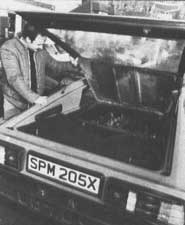

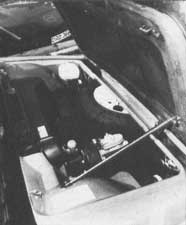
Turbo and Series 3
It had originally been on the cards that the Esprit would at some stage be offered with a V8 engine, and obviously the slant-four engine could have formed half of such an item. However, with the development of turbocharging having made that a more attractive proposition for a number of reasons – fuel economy, weight and silencing among them – that was the way to go.Early Turbos had their share of problems, especially with the 'wastegate' mechanism that prevents excessive boost from blowing the engine apart, but as research and development had taken place, so the Turbo Esprit has become a very desirable machine indeed.
Even better, the Turbo features a chassis that goes a stage further than the Series 1 & 2 type. The Opel front suspension was cast aside in favour of Lotus' own system, and at the rear the driveshafts were no longer expected to take the punishment as part of the suspension being left to do their job of turning the wheels while new lateral top links took over the job of keeping them upright.
The engine got a better spaceframe to sit in, and the whole chassis was now galvanised with a five-year warranty against corrosion; thus a late model Esprit has to be a good buy from the underside condition point of view.
Naturally, the normally-aspirated cars got the new chassis too, starting in April 1981, when the current Series 3 went into production. These latest cars have the 2.2 type 912 engine (the turbo engine is known as the type 910, having a number of differences in main bearings, compression ratio, cams, and valves – and those up to late '82 were dry sump lubricated), wrap round bumpers, superior trim and sound proofing, better engine access, and optional 15" BBS or 14" Speedline wheels, plus the bigger and better brakes of the Turbo Esprit.
In use
If you can only afford one really good car, and are happily married with many bambinos, forget the Esprit. I know it's hard! But if you can tuck one in the garage alongside your Morris Traveller/Cortina Estate, or are happily unattached, what more could you want for fast travelling than a car that goes very rapidly, around corners too, is basically reliable and turns heads (you probably won't remain totally unattached for long with one of these babies . . .) and has that wonderful feel of being inside something luxurious and snug, while still being able to see out in most directions – unlike some cars of the type.The Esprit is not uneconomical either, with 25mpg at maximum permitted motorway speeds perfectly possible, the Turbo even better at about 30. Naturally, if you're going to exploit the machine for more of its true potential in zooming around more interesting twisty roads and byways, those figures can and will drop to 20mpg or less. Oil consumption, as you may expect with a performance engine, is fairly high even in a perfectly healthy mechanical state – but it's probably not the kind of car which gets driven all day every day like the average Repmobile, so why worry?
Getting in and out of the car is a lot easier than some, despite the handbrake being located on the right, more or less in the sill section, and once inside, comfortable seating, plenty of legroom and sensible positioning of pedals, steering wheel and gearshift make you feel right at home. Ah, if only . . . !
You won't find a lot of luggage space of course, unless you have some very weird-shaped suitcases, and though you can get at the power unit quite well if you take a few panels off here and there, it's not the kind of layout which promotes the idea of very regular home maintenance. There, of course, is one of the potential problem areas in buying a true thoroughbred like this. Very often, they are bought new by a Top Executive, and have regular dealer attention until sold. Buyer number 2 is quite possibly going to have enough money to buy one, but not to keep up the maintenance schedule. And it really isn't the sort of car that the average DIY'er will be able to look after without some expert help; granted, it's easier to live with that way than, say, a Lamborghini, but it is a fact that some used supercars can have had a hard and untended life, so watch out.
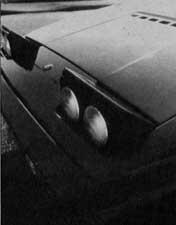
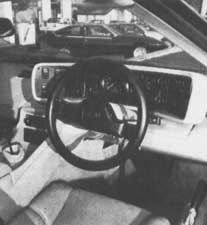
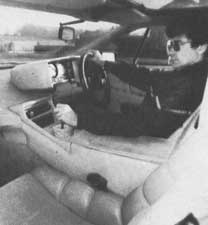
Points to note
So, bearing in mind that faith, hope, and the new Tokyoki socket set you got for Christmas are not really adequate to help you put a very well worn Esprit into first class order, it is very much a case of being prepared to raise as much money as you possibly can to get the best on the market for any given year if you want to avoid headaches. Those of you who are really up to Formula 1 team mechanic standards won't be reading this anyway, and will no doubt know much more than I about the job!Basically, though, the car hasn't really been around that many years for there to be any actually falling apart due to old age, so if an Esprit looks especially sad when you view it, it's down to bad previous owners, likely as not.
The chassis is strong and sophisticated, but should of course be looked at, preferably on a hydraulic lift. Signs of extreme corrosion are fairly unlikely – especially with the latest galvanised steel ones – but suspicious kinks or bent bits should be regarded as a sign that the car may have had a Big One. After all, fast cars crash hard.
Talking of which, in the event of an indiscretion of a more minor nature with that lovely wedge-shaped body, just about any piece that comes in for minor accidents can be obtained from the factory to enable a good boy man to make a repair. The finish is good, and being GRP means bodyshell rot is non-existent, so no worries there. Earliest models had self-coloured bodies, this was changed for painting after moulding later on.
There can of course be those irritating problems with things like door fitting and window leaks, and there are things like the dear old Austin Maxi-type interior door handles to come off in your hand, but nothing you won't be able to sort, or indeed, be able to put up with in the interests of owning a car of this kind. In a private deal, you may be able to use a few minor faults in haggling over the price . . .
The Esprit has quadruple pop-up headlights, and these have proved quite reliable since Lotus replaced the original single motor on the Series 1 with one for each side.
Suspension wise, both the Opel-type and Lotus front systems should give little trouble, and there do not appear to be any vastly expensive components that wear out with monotonous regularity. One should of course look for any odd type wear patterns as a sign of something well out of line. At the back, the Series 3 suspension has to be the best, as universal joints and wheelbearings do give a lot more trouble in the earlier cars due to the double life led by the driveshafts.
The engine should have no nasty rattles, and providing the Dellortos and/or the turbo unit, which is the well-known Garrett AiResearch type, are in good fettle, it will pull very strongly indeed. The cam belts should be checked regularly, but I'm informed that even if one does break, valve damage is usually the sole result rather than complete destruction. Best not to let it happen though, eh? Large amounts of blue or any other colour smoke should NOT be emitted, and being an alloy engine, try to make certain that previous owners have used the right kind of antifreeze, or expect bother. The cooling system has been upgraded along with the rest of the car, so the engine in any model should not run unduly hot. Incidentally, passenger space air-conditioning was an option on Series 2 onwards.
Prior to the latest models, exhaust systems did give a certain amount of bother, so examine the pipework closely for decay or fractures.
Transmission-wise, the Citroen Maserati transaxle is a good piece of equipment it seems, while the change linkage was improved in recent years with less joints in the rods from front to rear – though even the first models weren't bad by most standards.
The wheels on Series 1 cars may well be pretty badly tarnished by now, but the Speedline variety seems to be OK, as do the larger BBS ones. Standard tyres nowadays are Goodyear NCT, and the cognoscenti say that these suit the Esprit very well indeed.
Well, now we've come to the crunch. How much? In preparing this article we visited major Lotus dealers Bell & Colvill – where co-proprietor, Mr. Bobby Bell was able to fill us in on a few points about the Esprit as well as providing a car to point lenses at, B & C's West Horsley, Surrey, premises on the A246 would be a good place to look if Esprit-hunting with purchasing from a dealer in mind, with the back-up and peace of mind that can give.
While this type of machine can vary enormously in its value according to whether it is a well used, hammered 'n thrashed one, or just taken out for some quick motoring at weekends and fettled regularly in between, Mr Bell did indicate that he would expect to sell an Esprit in good (stressed – good) condition for its type at prices from £5000 for a series 1, £8,000 for a Series 2, up to well into five figures for an '81/82 Series 3, more for the Turbo Esprit of course. Bear in mind that the latest models can be up to £20,000 plus according to spec; that doesn't prevent, even in these hard times, a good number of new ones leaving Bell & Colvill's showrooms each year.
'There are good early Series 1 cars to be found,' assures Mr Bell, 'and fundamentally there were few real differences until the Series 3 came along, and for what is almost a bargain price you get something which looks and handles as well as any Ferrari and Lamborghini.' We are also informed that parts for any Esprit, whether chassis, body or drivetrain, are no problem.
Perhaps I should have enquired about the part exchange rates for an Astra, and part-worn family too while I was there . . .
Lotus Esprit Changes
Introduced June 1976 – Series 1, GRP 2 seater body on steel backbone chassis,
Type 907 Lotus 4-cylinder engine, 1973cc, DOHC, 16-valves. 160bhp at 6200rpm.June 1978 – Series 2, with new front spoiler, revised rear lights (Rover 3500 type),
improved engine cooling & cockpit demisting, uprated electrical systems, different camshafts.February 1980 – Series 2.2. Short run interim model, with original type chassis,
but 2172cc type 912 engine. 160bhp at 6500rpm. Increased torque. Electronic ignition,
uprated clutch.April 1981 – Series 3 introduced with revised chassis, new front and rear suspension,
new trim and better soundproofing inside, better engine access, choice of 14" or 15" wheels,
optional air conditioning. Larger brakes.June 1980 – Turbo Esprit introduced in limited production Essex Commemorative
Esprit model – the luxury version with all extras, e.g. leather upholstery, air conditioning
and extra cosmetic items; Turbo Esprit as such much cheaper. Chassis new type,
galvanised, adopted with suspension for Series 3 standard model. Slats over rear screen,
revised air flow to engine, which is type 910, 2172cc, basic layout as type 907/912, with
Garrett turbocharger set at 8 psi maximum boost, 210bhp at 6000rpm, new cooling system,
cars up to Dec 1982 dry sump lubricated, now changed to normal wet sump.